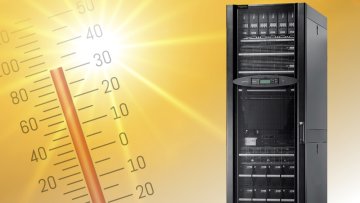Choosing a UPS System...how and why

When looking to introduce a UPS system into any environment, a number of key factors must be taken into consideration.
Different UPS systems offer varying levels of protection - from the basic 'Standby' solution, suitable for the home office and smaller applications, to 'Line Interactive' UPS, ideal for CCTV, networking and EPOS applications; and for server rooms and data centres, the 'Online' UPS.
The Principles
Irrespective of the UPS system deployed to protect your critical (connected) load, we must start with the basics of,
- What size does it need to be?
- How long will it provide back-up power for?
- Which type of UPS is right for my requirements?
What size does the UPS need to be?
For us to be able to answer this first question, we must understand the draw (power requirement) of the critical (connected) load. UPS systems are sized in terms of Watts (W), and/or Volt-Amps (VA). In recent years, we have seen more and more UPS systems offering higher power factors (pf). Unity power, now available across many lines, essentially means VA=W where 1000VA (or 1kVA) = 1000W (or 1kW). This new age of UPS simply offers more capacity and increased runtimes for your critical load. Older UPS systems would typically offer .7pf (1kVA=700W), or more recently, .9pf (1kVA=900W).
To understand how we get to this kVA figure, we need to understand the load value (i.e. the power requirement of the equipment to be protected) We can then determine how big the UPS needs to be.
How long will the UPS provide back-up power for?
The autonomy (runtime) is dependent on the load value and the quantity and size of the batteries housed within the UPS (or in external battery modules connected to the UPS). A small UPS system designed to protect a switch cabinet or server may typically return anywhere between 5-10 minutes runtime (depending on the load value). Where increased loads and longer runtimes are required, bigger UPS systems and an increased quantity of batteries are required.
Which UPS is right for my requirements?
There are 3 main topologies for UPS systems - Offline (or Standby), Line Interactive, and Online (or Double Conversion). These are so named due to the way power flows through the unit.
- An Offline (or Standby) UPS is perfect for applications such as desktop PCs, CCTV equipment and EPOS. The UPS sits in standby until called upon in the event of a power failure, sag or spike. It then takes up the load in less than 2 milliseconds and continues to power the critical load without any discernible difference to the user. The advantages of this topology are that they are low cost and easy to deploy for even the least technically minded. The drawback is that they will only provide back-up power for these 3 mentioned power issues. These UPS systems are now few in the marketplace, an example of one is the Eaton Ellipse ECO.
- A Line Interactive UPS monitors the quality of the supply and reacts to fluctuations. A voltage compensation circuit is enabled to boost or reduce the supply voltage to compensate for the fluctuations. This type of UPS will provide the same level of protection as the Offline UPS in addition to Undervoltage and Overvoltage. Perfect for network and I.T. applications, these UPS systems are available in larger sizes with increased runtimes and can be managed remotely via an SNMP network card. Such an example is the Certa C300R.
- An Online UPS provides maximum protection for your critical load and protects against the 9 most common power issues. Essential for mission critical applications such as Servers, Call Centres, Data Centres, Storage, Emergency Lighting and Medical Equipment, the UPS ensures a consistent quality of power supply regardless of disturbances in the incoming mains. The output voltage is entirely regenerated by a sequence of AC to DC conversion followed by DC to AC conversion in order to create a power supply without any electrical interference. Double Conversion UPS can be used with any type of equipment as there are no transients when changing over to battery power. An example of an Online UPS is our best-selling Eaton 93PS UPS system.
For assistance on identifying the right UPS solution for your needs, contact our friendly sales team at sales@nsse.co.uk or call us on 0333 222 4000 today.


